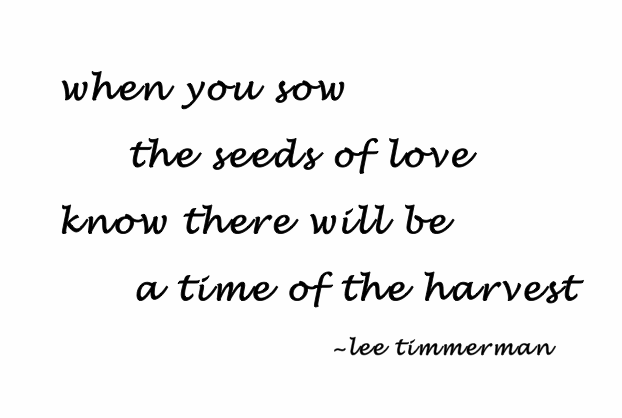The first step of meditation is pranayama, or breath control. Without regulation of the breath, there can be no regulation of the mind. If there is no regulation of the mind, there can be no meditation.
The first step of meditation should be the simple inhalation and exhalation of the 1–12 pranayama technique. This is inhaling to the count of 12 and then exhaling to the count of 12, trying to regulate or make the breath even. It is a deep, calm, even breath. This should be done until the breath is quite relaxed and rhythmic.
Then we start meditating with the So Hum technique. As we inhale, we listen to the sound of our breath. The sound of the inhalation is “So.” As we exhale, we listen to the sound of our breath. The sound of the exhalation is “Hum.” We are listening to the sound of the breath while mentally saying So on the inhalation and Hum on the exhalation. We are focusing on the breath. We pay attention to all the thoughts and distractions that come. We are not letting them keep us from focusing, but neither are we ignoring them. These thoughts or distractions are telling us something about our days, something about us. We can choose to either evaluate them or not during meditation. We are just paying attention.
The deeper we dive into the So Hum, the deeper our meditations will be. We will begin to transcend the mind and areas of mental activity. Once we begin to do that, it is time to go to the Om technique. Instead of using the So Hum mantra, you now use the Om mantra.[1] When we attune to the Om, we will be attuning to all life, and we will then begin to feel our self expanding out beyond our limited identities. We will experience our self expanding out into the rest of life. This meditation of deep, even 1–12 breathing, the So Hum technique and the Om technique should be done on a daily basis. One of your meditations each day should be this basic meditation.
Meditation is simple. In each meditation, you should dive into your self and come away feeling energized. You should feel calmer and more relaxed while doing the deep breathing. You may feel energized while you are doing the breathing techniques. You should have more self-awareness while doing the So Hum mantra. You should feel more expanded into the rest of life, with the Om mantra. With each meditation, you should feel all these things. If you aren’t feeling them in each meditation, it means you are not concentrating.
I know most people have active schedules, but preparing yourself for meditation is simple. When it is getting close to meditation time, you begin to put the rest of the stuff away. You use non-attachment and say, “I’ll get back to that after my meditation. This does not need to be dealt with for the next half-hour.” You don’t have to spend a long time in the preparation for meditation. Take a few minutes before you sit down to clear the mind of all the things and activities you have been doing and will be doing afterwards. Take a little time to begin to get perspective on why you are meditating and what you hope to gain. Then sit down to meditate. Do the 1–12 deep breathing. Do the So Hum mantra and then do the Om mantra. If this meditation is done on a consistent basis, self-realization will come to you because you will have made the effort to discover and realize your self. You will be using some of the most powerful meditation techniques available to humanity.
In the beginning, it is better to have two half-hour meditations than to have one hour-long meditation. It is recommended that you have one meditation at the beginning of your day and the second one at the end of your day. If you only have an hour a day, then it is best to take a half-hour in the morning and a half-hour in the evening.
The timing of your meditations is important. You need to be alert for your meditation. Meditating right before bed is not a good time because most people aren’t alert at that time. Meditating immediately after getting out of bed is also not a good time because most people aren’t alert upon waking. Each person needs to find the proper time. It may take you from ten minutes to an hour after you get out of bed to feel alert. If you get up early and want to meditate before you go to work, increase your 1–12 deep breathing. This will bring alertness. Find the time of day that is best suited for you and try to make it consistent. Don’t become too rigid in your schedule or structure, but be consistent in your scheduled meditation time.
Your place of meditation should be inspirational. It should give you the feeling that you will be able to attain something. Don’t go off in a dark closet and close the door because it is the only peaceful place in the house. There is nothing inspirational about a cluttered closet. Find a time when you can sit somewhere that is comfortable and open. If this is your bedroom, that is fine. If this is your living room, that is fine. If this is your back porch, that is fine. It should be a space in which you feel comfortable and open to life. Find a place that is well ventilated with clean air. Keep the air as fresh and clean as you can.
As for posture, you must be comfortable. If you are comfortable sitting cross-legged, do so. If not, find a good chair in which your spine can be kept comfortably erect for a half-hour or an hour meditation. Do not get sloppy in your posture. The main pranic (energy) channels flow from the base of the spine to the crown. If the spine is not kept erect, then these energy channels cannot flow freely. It is important to have proper posture.
You need discipline, because your experience with your wholistic self comes in meditation. It doesn’t come after the end of a lifetime. It comes in a focused and one-pointed meditation. This is when you will expand into your larger self. Sit down to each meditation with the focus that meditation will bring you more self-awareness, more harmonization. Be disciplined and one-pointed in your meditations. This discipline and one-pointedness will help in all areas of your life. A disciplined, consistent effort in meditation will bring knowledge of our wholistic nature. By taking the knowledge we gain in meditation and incorporating it into our daily life, we will be harmonizing with our wholistic nature.
Meditation is the process of calming the mind, breath, and ego for the purpose of realizing one’s wholistic nature. Meditation is a very simple and gentle process and should be practiced with a gentle yet firm discipline. Concentration leads to a quieter and deeper meditation. When we continue to get quieter still, we will reach the superconscious. Here we will notice that the So Hum has grown very soft until eventually we will hear the sound of existence, which is the Om sound. It is the sound of silence. There is a sound throughout existence that is humming at all times. We use the So Hum mantra to emulate the sound we hear. We can do it on the inhalation and exhalation, or just on the exhalation. The So Hum is most closely associated with the Om mantra, which is the sound of existence. As the mind gets calmer and quieter, we switch to the Om. If the mind doesn’t get that quiet, we may stay with the So Hum. When the mind won’t get quiet, it means we should pay attention to what is keeping us from calming down. The 30-minutes we have set aside for meditation is just a slice of our life. Thoughts that are there will be the same thoughts that were there yesterday and will be with us tomorrow, so they need to be addressed. When you work on something in meditation, always do so gently.
With consistent deep breathing, concentration, and meditation, we will be able to get to the part of our nature that is full of joy. When we are doing this daily, it becomes easier to deal with everything in the subconscious. As we remove the fears, phobias, and insecurities, we will have greater freedom from the issues that keep us from living within our nature. This freedom from all of the issues that cause us conflict, will lead us to freedom into the enjoyment of everyday life. We will be freed into love, play, joy, and into a life that we choose to live. Our relationships will be healthy and enjoyable. This is done day-by-day. Meditation and breathing may seem to have magical results, but it is our efforts that will bring the results.


